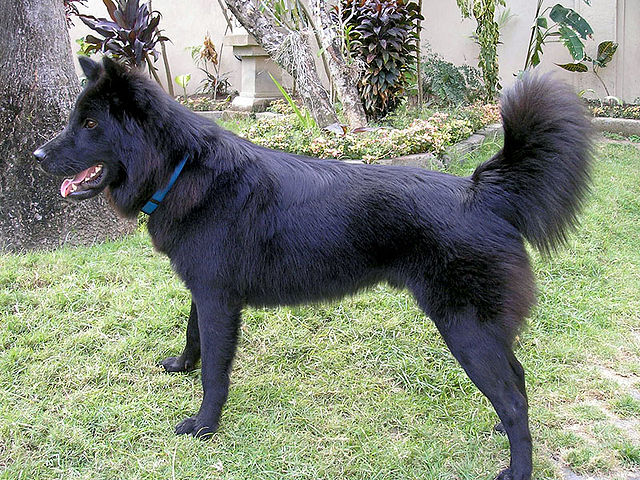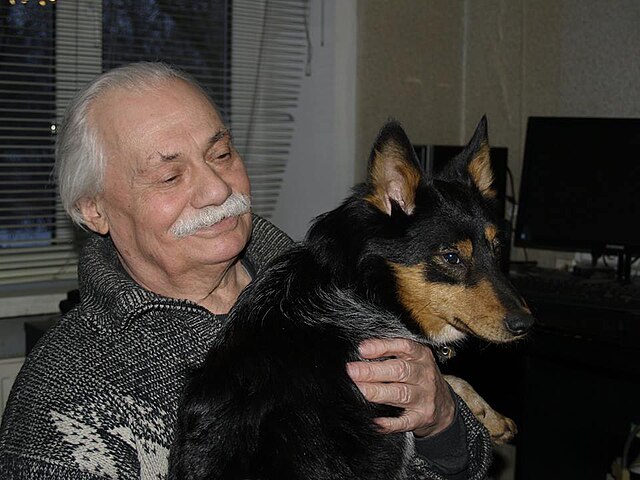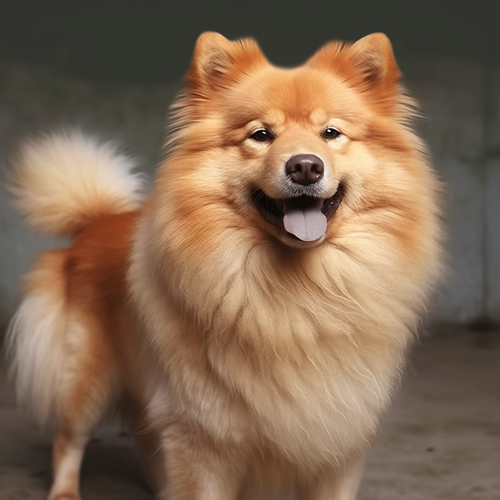The Kintamani-Bali Dog originated in Indonesia as a household pet, and is the national breed of the country. While his genealogical history remains unknown, some believe that the Chow Chow is in this spitz’ background, as well as Balinese feral “street” dogs. We do know that this breed has had a parent club and has been shown since 1985. It is also the first Indonesian breed to gain international recognition, and is a provisional member of the FCI. This said, they are still a rare breed in the United States and a prospective owner will very likely need to import a dog from overseas if a puppy is desired.
Kintamani are said to be extremely intelligent and easy to train, although they do have an independent streak like many spitz breeds. With dedication (and a pinch of patience) from their owner, the Kinta can be successful in many dog sports such as agility or obedience! They do best with trainers that utilize fair and balanced methods, as overly harsh training can cause the dog to shut down or even react aggressively. Furthermore they do best when training is made fun and interesting, as many get bored easily.
The Kinta makes an excellent watch dog, as he will bark if he hears an unexpected sound or sees a stranger out the window. He can also be extremely territorial towards those who enter his property – particularly other dogs – even becoming aggressive if the situation warrants it. As this is also a climbing breed (it isn’t unexpected to see them scaling walls or sitting atop fences in Bali), care must be taken to ensure the property is safely escape-proof so he doesn’t become a liability. His somewhat alarming guarding behavior is in sharp contrast to the gentle and affectionate nature that he shares with those whom he loves. He is very faithful and loyal to those he considers his family. One of his original purposes was to guard the property, so these traits are valued and a natural part of his temperament. 
The KBD has plenty of energy and needs regular exercise, especially younger dogs. Hiking is a great activity, as well as swimming, jogging and even exercise that incorporates fun games! Many particularly enjoy swimming and have a natural talent for it, which means regular visits to a beach or pool are especially appreciated by the dog! They aren’t a great match for someone looking for a couch potato, for while they do calm down with age, they definitely require some sort of engaging activity throughout their lives.
Kintamani-Bali Dogs tend to get along well with children (when socialized to them) and can make very good family pets in the right setting. Take note that some don’t get along with other dogs (especially strange dogs approaching their territory) so this may not be the best choice for someone who wants a very dog-social dog. Many also are not cat-safe. Because of their higher energy level and propensity to bark frequently, they also aren’t the greatest idea as an apartment dog. While some members of the breed are easier than others, even being able to live with novice owners, their upbringing and the living situation makes all the difference!
The Kintamani is characterized by a broad, wedge-shaped head and rectangular erect ears. The overall body of the Kinta is slightly rectangular with a level topline. The coat is a medium length, double coat with a harsh texture. A bushy “frill” of longer hair should surround the neck and withers, as well as the tail. Colors allowed are white, fawn, black and brindle. While it may look difficult to care for, the coat is actually fairly easy as long as a grooming schedule is kept at home. The coat needs brushing only once or twice a week during most time of the year, except during shedding season which may require daily care.



